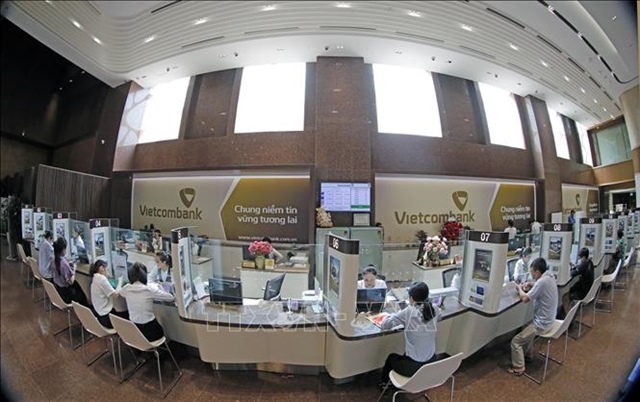Where’s the cash gone?
Where’s the cash gone?
Commercial banks keep offering high interest rates to attract more deposits from the public. The business circle affirms it is thirsty for capital, while workers complain about modest Tet bonuses. Where has the cash gone, then?

Input capital profuse, but money still lacking
According to the State Bank of Vietnam, the banking system’s credit growth rate was 8.91 percent in 2012, while the mobilized capital growth rate was 24 percent.
With the 24 percent capital increase, the banking system had VND700 trillion dong more in capital if compared with December 31, 2011. Meanwhile, banks have used VND450 trillion dong in total (banks lent VND270 trillion, bought government bonds and paid for the compulsory reserves). This means that VND250 trillion dong worth of capital still has been available.
However, all the sectors of the national economy still complain they lack capital.
Paradoxes still exist. Though the banking system has capital in excess, banks do not intend to ease the deposit interest rates. In Hanoi, some sources said people can negotiate with some banks to enjoy the interest rate of 11.5 percent for three month term deposits and 12 percent for 12 month term deposit, though the current ceiling short term deposit interest rate is nine percent per annum.
Commercial banks have all confirmed that the demand for loans is not too high and that the liquidity is now very strong, but they still have to push up the capital mobilization.
According to Cao Sy Kiem, former Governor of the State Bank of Vietnam, though the liquidity of the whole banking system is good, the liquidity of some banks remain weak. Since the banks cannot borrow money in the interbank market, they have to try to seek more capital from the public, thus having to push the deposit interest rates high up.
Where’s the money?
In principle, banks have to get the money back when the loans become matured. However, borrowers cannot pay bank debts on schedule, because they cannot sell products in the economic recession with low purchasing power.
Though banks cannot collect debts from borrowers, they still have to pay for deposit interests. Therefore, they have to attract new deposits to get money to pay for old deposit interests.
Experts have every reason to doubt that banks now push up mobilizing capital to cover the short liquidity.
As such, the problem lies in the big iceberg of debts. Dr Le Xuan Nghia, a well- known economist, said at a recent workshop that the bad debt ratio of the banking system is now very high.
He cited a State Bank’s report as saying that the total outstanding loans have reached 2,800 trillion dong, with 73 percent of the loans mortgaged with assets and over 66 percent mortgaged with real estate products.
However, the frozen real estate market has turned many debts irrecoverable.
According to Nguyen Ba Thanh, a National Assembly Deputy from Da Nang City, the sharp falls of the real estate prices have made the mortgaged assets, now in the hands of banks, become less valuable.
In the past, a land plot was valuated at VND1 trillion dong with which a client could borrow VND600 billion from banks. However, the land plot now is priced at VND100 billion dong only, which means that if banks sell the mortgaged assets, they cannot collect enough money.
The commercial banks which have profuse capital have funneled their money into the government bonds or lent in the interbank market.
Pham Kim Nam, an economist, has pointed out that this is a big problem of the national economy. While businesses are thirsty for capital, the money still keeps outside which has not been put into serving the production and business.
vietnamnet




























